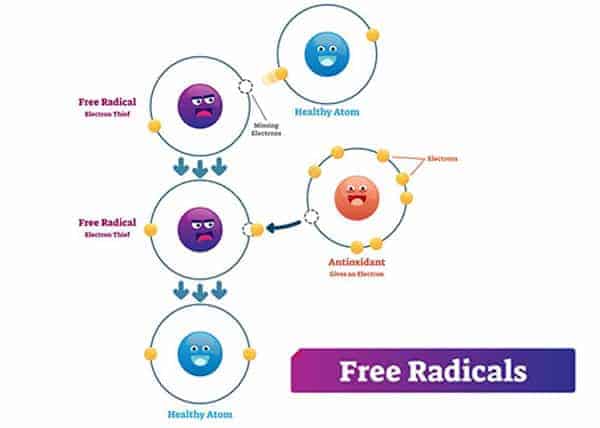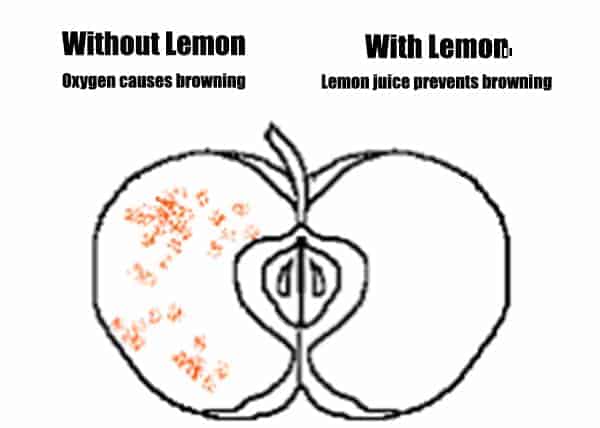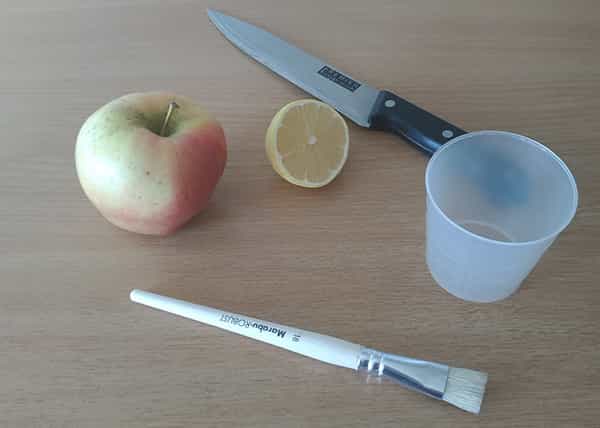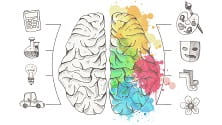You probably heard the word “antioxidant” in some health-related articles or commercials. But do you know what antioxidants are and how they work? You will find out today with this simple apple science experiment!
Article Contents
1. What is Oxidation?
2. What are the Antioxidants?
3. The science behind the Apple Oxidation Activity
4. Materials needed for an Apple Oxidation Experiment with Lemon Acid
5. Instruction for Apple Oxidation Experiment
6. What Will You Learn And Develop By Doing this Apple Experiment
What is Oxidation?
In simple terms, oxidation is a loss of electrons in an element or a compound in contact with the oxygen in the air. The opposite process is called reduction. Reduction is the process where a compound or an element gains electrons in the contact with oxygen.

The most well-known example of oxidation is when iron combines with oxygen to form iron oxide or rust. In these situations, we say that iron has oxidized into rust.
After the discovery of electrons, scientists concluded that oxidation and reduction are happening at the same time. That process is called Redox reaction or Oxidation-reduction.
Some elements, such as Sodium, Magnesium, and Iron lose electrons more easily than the others – we say they are easily oxidized. On the other hand, there are elements that hold their electrons more tightly, like Nitrogen and Chlorine – they are hard to oxidize.
Interestingly, oxidation doesn’t necessarily involve oxygen! Oxygen was the first discovered oxidant so the name stayed until today. There is another oxidation definition that includes hydrogen. Here, oxidation is the loss of hydrogen, while reduction is the gain of hydrogen. This is the opposite of the oxygen definition, so it may be confusing. That’s why it is good to be aware of this alternative definition of oxidation.
What are the Antioxidants?
Antioxidants are the molecules that prevent oxidation in other molecules. Why is that important? Most life on the Earth requires oxygen for its survival. However, oxidation in our body can lead to the production of free radicals which may damage our cells.

If your body has high levels of free radicals, it can cause harm. Free radicals are linked to a variety of diseases, including diabetes, heart disease, and cancer. But they are mostly kept in check by our body’s antioxidant defenses.
Antioxidants are slowing down that process of oxidation – in theory, they could slow down the aging process and prevent the development of certain diseases. The best-known antioxidants in the human body are vitamins C and E and can be found in food, especially plant-based foods like fruit and vegetable. Lemon is especially rich in vitamin C because of the lemon acid. Lemon acid (just like all other acids) has lower pH values and that is why they slow down reactions with oxygen.
But next to being good for our bodies, antioxidants are used as food preservatives too! In the food preservation process, antioxidants are compounds that delay or prevent the deterioration of foods by oxidative mechanisms. It involves the addition of an oxygen atom or the removal of a hydrogen atom from the different chemical molecules found in food.
The science behind the Apple Oxidation Activity
Why is the apple quickly turning brown when peeled off or sliced? Apple contains a peel or shell that protects the inside of an apple. When the inner part of the apple is exposed to air, browning in apples occurs. That browning process is called enzymatic browning or oxidation reaction.

That’s because the oxygen-reactive enzyme is found under the surface (skin) layer. These enzymes are called phenols and they are found in the cells of the apple. The brown color of the skin is caused by the phenols being transformed into melanin. The phenolase enzymes need to be protected in order to stop the reaction. And that can be achieved by using heat or acid.
Citric acid from the lemon serves as an antioxidant in our experiment. All acids slow down the oxidation process because of their low pH. Oxygen will first react with acid and only when all acid has been depleted will it react with the apple enzymes. Then we will see an apple turning brown.
Materials needed for an Apple Oxidation Experiment with Lemon Acid

- Apple. One apple will be enough. The fresher apple will make the experiment more clear but any apple will suffice. Just make sure you are able to make at least 2 apple slices.
- Lemon. One lemon or even one slice of lemon will be enough. We just need to apply citric acid to one slice of the apple, and for that, we just need a small amount of lemon acid.
- Cup or bowl. Cup will help us to squeeze lemon in it so we can apply lemon acid more easily to the apple. But it’s entirely optional.
- Brush. As with the cup, the brush can help us to apply lemon acid to the apple slice more precisely for better experiment effects. But we can even soak the apple in acid or apply in any other way so the brush is also optional.
- Kitchen knife. To slice the apple. It shouldn’t be a problem to get a kitchen knife so we can cut 2, same-sized apple slices for the best comparison of experiment results.
Instruction for Apple Oxidation Experiment
For video instruction on how to do this experiment, watch the “how-to” video at the beginning of an article or continue reading for step-by-step instructions.
1. Cut an apple in half, so you have 2 equal apple pieces.
2. Take the lemon you have prepared and squeeze it into a cup. Or you can directly squeeze the lemon juice on one apple slice if you want to speed up the process.
3. Take a brush, dip it into the lemon juice, and spread it over one apple slice. This will be our experiment slice where we try to prevent the oxidation process. Don’t apply anything to another slice since. We will see what happens to the apple if we don’t apply any food preservatives to it.

4. Leave your 2 apple slices at room temperature for a couple of hours. You can check your apple slices every hour to see if there is any difference. You should notice the differences between the 2 slices already after one hour.
5. Check the state of your apple halves after 1, 2, and 3 hours and talk with your child about the observed effects.
What Will You Learn And Develop By Doing this Apple Experiment
- Formulating scientific hypotheses,
- Planning and conducting a scientific experiment,
- Observing and tracking results,
- Enhancing the logical thinking skills,
- Learning about chemical processes, oxidation, antioxidants, and food preservatives.
If you enjoyed this experiment and would like to do more experiments with simple ingredients, check out these great activities:
- If you enjoyed the Apple oxidation experiment, you will love the Gummy bear osmosis experiment where you will learn about osmosis using tasty gummy bears.
- Learn How to make sugar crystals, and learn about crystallization while making a great homemade treat.
- Learn How to make plastic from milk and vinegar, and create your own amazing plastic from plain milk. With some molds, you can be your own toymaker!
- And for another kitchen experiment, be sure to try a simple Orange density experiment and learn about buoyancy.
Happy science learning and don’t forget about the most important thing – having fun!
If you’re searching for some great STEM Activities for Kids and Child development tips, you’re in the right place! Check the Categories below to find the right activity for you.

STEM Science
Videos, guides and explanations about STEM Science in a step-by-step way with materials you probably already have at your home. Find new Science ideas.
Read more
STEM Technology
Videos, guides and explanations about STEM Technology in a step-by-step way with materials you probably already have at your home. Find new Technology ideas.
Read more
STEM Engineering
Videos, guides and explanations about STEM Engineering in a step-by-step way with materials you probably already have at your home. New Engineering ideas!
Read more
STEM Math
Videos, guides and explanations about STEM Math in a step-by-step way with materials you probably already have at your home. Find new Mathematics ideas.
Read more
Psychology
Find out all about development psychology topics that you always wanted to know. Here are articles from child psychology and development psychology overall.
Read more
First year of Child’s Life
Following a Child’s development every month from its birth. Personal experiences and tips on how to cope with challenges that you will face in parenting.
Read more
3 thoughts on “Apple Oxidation Experiment”